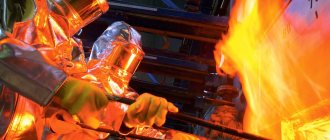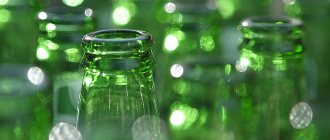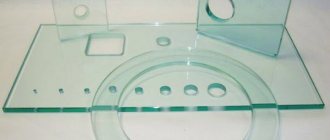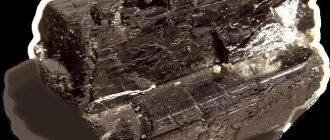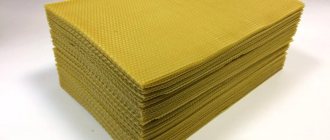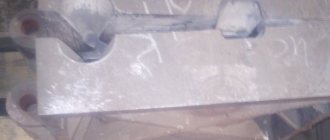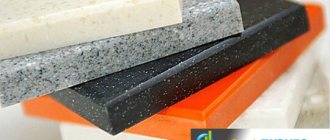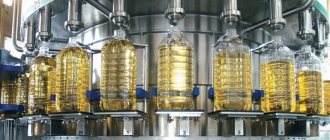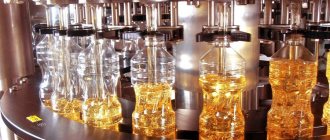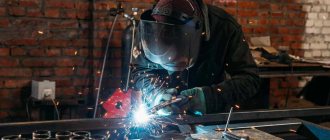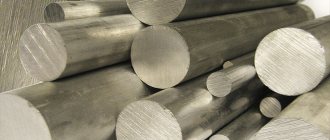Looking at yourself in a store window, washing your face and looking in the mirror in the morning, watching the strange mixing of coffee with milk through the transparent walls of a cup are common activities. And no one thinks about how to make glass in order to become an integral attribute of the life of a modern person. It all starts with mixing unusual ingredients.
Glass production technology begins with the preparation and mixing of the constituent parts. The quality of glass products depends on the degree of preparation of the ingredients.
Glass substrate sorting
Before making glass , the sand is sifted and sorted. Raw materials of poorer quality are used for the production of window glass, while the best are used for the manufacture of tableware, jewelry, optical lenses and artistic products. The difference in the size of the grains and the chemical composition affects it: the finer the sand, the wider the scope of its application. If large grains of sand predominate, then such sand is the main raw material for window glass.
Cooling and leveling the glass surface
The resulting mixture is poured into baths filled with molten tin. The density of the latter is less than the density of hot glass, so it spreads evenly throughout the bath. At the same time, it is cooled to a temperature of 600 degrees, because the temperature of tin is lower than the temperature of liquid glass. A large roller pulls out the soft glass and pushes it further.
Production
In Russia, the following types of liquid glass are produced in industrial quantities:
- sodium,
- potassium,
- mixed type.
Production is regulated by GOSTs:
- 13078-81,
- 18958-71,
- TU 21-23-109-78,
- 21-23-109-73.
Other types are produced in accordance with temporary standards of enterprises and specifications .
90% of the total production of soluble silicates comes from sodium liquid glass.
There are three main production technologies, all of which are characterized by high energy costs and the use of complex equipment.
But there is another, new one that is different:
- ease of production;
- using glass waste (cullet) as a silicon-containing raw material.
Let's take a brief look at each technology.
Sintering a mixture of natural sand and technical soda
Glass production includes the following steps:
- mixing anhydrous components;
- firing the resulting mixture in ovens at temperatures reaching 1300°C;
- cooling the fused components on a moving conveyor until glassy pieces (silicate blocks) form;
- placing the pieces in an autoclave to dissolve them with steam under pressure, or crushing the pieces into a powder, which is then dissolved in hot water.
Obtaining a product by processing silicon raw materials
The receiving process includes:
- grinding raw materials in a mill with a vibrator;
- adding sodium hydroxide (potassium, lithium);
- stirring silica raw materials at temperatures up to 1000°C with a saturated alkali solution; duration - from 30 minutes to 1.5 hours in an autoclave with a vibrator.
Hydrothermal method
The product is obtained by dissolving silicon raw materials with strong alkaline solutions .
This technology is more simplified.
It is not necessary to heat the components to temperatures close to 1000°C.
Heating will occur on its own due to the release of heat as a result of the alkaline reaction.
New technology - the use of cullet
Recyclable materials are pre-prepared:
- wash;
- cleared of impurities;
- crushed.
It is necessary to get rid of oxides of calcium, magnesium, iron and other metals so that the raw materials are suitable for further use.
After melting, the broken glass turns into a silicate block - in this form, the raw materials are used to manufacture the final product .
Liquid glass in finished form is obtained in a vibrating mixer as a result of 0.5 - 1.5 hours of interaction of the mixture with water heated to a temperature of 100 °C.
The use of recycled materials has a positive effect on the quality of the final product and at the same time solves the problem of recycling glass containers.
Recycling 10% of cullet reduces gas consumption by 3%. In other words, if you produce glass exclusively from cullet, gas consumption will decrease by 30%.
Natural gas is the main fuel used in the Russian glass industry.
Cutting
The resulting “endless” glass sheet is cut with a diamond. The cutting device moves along a trajectory at an angle. The sheet is fed by constantly moving rollers. The diamond “catches” the movements, adjusts and cuts straight sheets. Next, one of the rollers is raised and the glass is separated along the cutting line.
Equipment for glass production
The glass production process is, of course, lengthy, but nowadays most operations are automated. The equipment is varied and expensive.
Main equipment of glass factories:
- vehicles for transporting sand from quarries to conveyors;
- conveyor belts for moving raw materials to sorting areas;
- sand washing drums;
- sorting devices;
- filtering installations;
- installations for mixing components;
- glass melting furnaces;
- leveling baths or devices for drawing sheets of glass;
- conveyors equipped with rollers for moving glass around the workshop;
- automated device with diamond for cutting sheets;
- pneumatic gripping devices.
Method 2: Glass blowing
In this glass forming method, molten glass is blown into a bubble using a blow tube. It is used for the production of bottles and other containers.
How it works?
Inflation refers to the process of expanding a molten piece of glass by injecting a small volume of air into it. Because the atoms in liquid glass are held together by strong chemical bonds in a random and disordered network, molten glass is viscous enough to be blown. As it cools, it slowly hardens.
To facilitate the blowing process, the rigidity of the molten glass is increased by slightly changing its composition. It turns out that adding a small amount of Natron makes glass harder to blow. (Natron is a naturally occurring substance containing sodium carbonate decahydrate and sodium bicarbonate.)
When blown, thicker layers of glass cool more slowly than thinner ones and become less viscous than thinner ones. This allows blown glass to be produced at a uniform thickness.
Over the past couple of decades, more efficient and effective glass blowing methods have been developed. Most of them involve the same steps:
Step 1: Place the glass in the oven and heat it to 1300°C to make it pliable.
Step 2: Place one end of the blow tube in the furnace and roll it over the molten glass until a “blob” of glass sticks to it.
Step 3: Roll the molten glass onto a marver, a flat metal plate that is made of polished steel, graphite or brass and attached to a wooden or metal table. The marver is used to control the shape as well as the temperature of the glass.
Marver is used to form glass
Step 4: Blow air into the pipe to create a bubble. Collect more glass over this bubble to make a larger piece. Once the glass has reached the desired size, the bottom is ready.
Step 5: Attach the molten glass to an iron or stainless steel rod (commonly known as a point) to form and transfer the hollow piece from the blowpipe.
Step 6: Add color and design by dipping it in broken colored glass. These crushed pieces quickly stick to the main glass due to the high temperature. Intricate and detailed patterns can be constructed using cane (rods made of colored glass) and murrin (rods cut in cross section to reveal patterns).
Step 7: Take the resulting product back and roll it out again to give it the desired shape.
Step 8: Remove the glass from the glass pipe using steel tweezers. Typically the bottom of the blown glass is separated from the rotating blow tube. It can be removed from the blowpipe with just one touch.
Step 9: Place the blown glass in the annealing oven and let it cool for a few hours. To avoid accidental cracking, do not expose it to sudden changes in temperature.
Roman blown glass from the 4th century AD
This method requires special patience, perseverance and skill. It takes a team of experienced glass craftsmen to create complex and large pieces.
Glass at home
Craftsmen can make glass even at home. First you need to calculate the proportions of the components. Having studied what glass is made from, the composition of the future glass mixture includes: sand, soda, lime, broken glass.
Here's how to make glass for your home:
- Preparation of main components. You need to heat 180 grams of baking soda over a fire until the moisture evaporates. Heat 400 grams of sifted, washed sand over a fire and dry. Grind 80 grams of lime. Pour into one bowl. Add 10 grams of boric acid and two table salts.
- To make glass yourself, you need to prepare a container. To maintain integrity in high heat, it is advisable to coat metal dishes with a mixture of liquid glass and clay in several layers. To do this, mix a few tablespoons of modeling clay with water until liquid. Then add one or two tablespoons of liquid glass. Using a brush, coat the dishes.
- Heat the coated vessel with gas. Its surface will be covered with convex “pimples”.
- Prepare broken glass: sift the broken dishes. Place three tablespoons of small glass particles in a cooking vessel. Add the rest of the raw materials.
- Place the resulting mixture on the fire. You can blow it with a forge. After three to four hours, the mixture will melt to a liquid glass consistency.
Main stages of the glass production process
If we do not consider all the technological details, the glass melting process itself can be divided into several conventional stages:
- creating an initial mixture of components. The first stage, which is considered one of the most important. It is necessary to strictly observe the dosage and proportions between the main components so that the final glass meets the necessary requirements;
- preparing the charge for further processing. This is an intermediate stage, which consists of uniformly mixing all components before feeding into the loading hopper. There are a number of new developments that make it possible to preheat the feed mixture and mix it more thoroughly. This leads to reduced energy costs and greater production efficiency;
- feeding the composition into a special oven. For the production of sheet rolled glass, direct-flow bath furnaces are used, which are made of heat-resistant materials. During the smelting process, the components of the original raw materials are transformed into a physically and chemically homogeneous mass, from which various impurities and gases are removed;
- glass smelting. After the formation of a homogeneous mass at a certain temperature, the casting process occurs.
There are two main methods for producing rolled glass. The first, conservative one, is based on extracting the molten composition from the furnace and rolling it on a special conveyor. As a result, sheets are formed from the liquid mass, which are then fed into the cooling chamber. This method has several disadvantages - it is difficult to obtain glass of uniform thickness over the entire sheet size and the production process is too labor-intensive.
The second method is called the “float method”. Today it has become the only option for producing thin sheet glass. Almost all factories in Europe operate using this technology. The essence of the method is as follows - after the preparation of the charge for further processing is completed, the process of preheating it and removing excess gases occurs, and then the composition is evenly fed into the melting furnace. Until the last stage, the technological process is practically no different from the traditional method of producing rolled glass. Once the melt is ready, it is passed through baths of molten tin. The density of the substances is different and the liquid hot glass ends up on top, where under the influence of physical forces it begins to evenly fill the required surface. After this, the finished sheet is sent to a chamber for cooling and further processing. As a result, in this way it is possible to obtain not only glass of the required thickness, but also a sheet with uniform dimensions over the entire area.
Quality Standards
There are a huge number of types of glass. To determine the quality of each type, state standards have been created, which describe the properties and quality characteristics.
There are GOST standards for quartz, sheet, medical, multilayer, curved, inorganic, optical and other types of glass. They describe production technologies, brands, methods for determining quality, and classification.
Glass brands
Large manufacturing companies produce a wide range of sheet glass types. This is due to the popular glazing of large office and retail buildings in major cities. Therefore, manufacturers often use GOST No. 111-90 “Sheet glass. Technical conditions".
According to their intended purpose, glass is divided into the following grades:
- M1 - mirror improved. The thickness of the products is no more than 6 mm and no less than 2 mm. Designed for car windshields and high-quality mirrors.
- M2 - mirror. Used for the production of mirrors and glass in public transport.
- M3 - polished technical. They produce decorative furniture elements and mirrors.
- M4 - polished window. Serves for high-quality glazing of translucent, safety glass structures of vehicles.
- M5 - unpolished improved window. Used for glass of agricultural vehicles.
- M6 - unpolished window. Used to create translucent structures.
- M7 - polished display case. Thickness ranges from 6.5 mm to 12 mm. Used in the design of shop windows and stained glass.
- M8 - unpolished display case. Showcases and lanterns are made from it.
What can be made from liquid glass?
You can evaluate the merits of the material by preparing:
- Fire-resistant impregnation for wood : 25 g barium sulfate + 7 g zinc oxide + 20 ml water + 25 g liquid glass + optional colored mineral dye. Cover in two layers.
- Reliable glue : sugar + liquid glass + glycerin in a ratio of 4:10:1.
- Repair mixture for stone buildings : cement + liquid glass in a ratio of 4:2. It is recommended to pre-moisten the joints with liquid glass.
- Primer : cement + liquid glass in a ratio of 1:1.
- Waterproofing solution for treating wells, swimming pools and other surfaces: liquid glass + cement + sand in a ratio of 1:1:1.
- Antiseptic solution : liquid glass + water in a ratio of 1:1.
- Putty : zinc white + asbestos in a ratio of 1:2 + liquid glass until a thick paste-like mixture is formed.
- Mixture for fastening iron : manganese dioxide + zinc white + liquid glass (1:1 + the amount required to form a thick slurry). The resulting composition can withstand even hot temperatures.
All materials harden quickly. It is recommended to prepare them immediately before use.
First, the dry ingredients are mixed, then they are supplemented with liquid ingredients.
This material also attracts creative people. Easily amenable to modification, it makes it possible to create a variety of decorative products.
Liquid glass is often used to decorate surfaces and secure various decorative elements:
- beads;
- shells;
- patterns.
Exclusive things are made from it:
- hairpins;
- brooches;
- earrings;
- pendants;
- beads
Also used for decorating paintings, making flowers, figurines and vases.
Classification of glass products
Around a person there are a lot of objects made of glass or with its inclusions. They can be summarized by intended use.
Main groups of glass products:
- Household products. Which in turn are divided into household, artistic and decorative, kitchen utensils. Household products are used for canning and storing food. Artistic and decorative - have high aesthetic properties and are used to decorate the interior. Kitchen utensils are made of borosilicate or sital glass, which has fire-resistant properties. Therefore, the assortment is represented by braziers, saucepans, and roasting pans.
- Construction glass - glass used in construction. Production includes glass for windows, shop windows, stained glass, double-glazed windows, glass blocks, and other construction products.
- Technical - glass that has a narrow specialization. Includes medical optical, laboratory glassware, transport glassware, electrical glassware, and car parts.
Application of glass
Glass products are used in many areas of human activity. In some, its hardness is important, in others - transparency, quality is valued equally everywhere.
Directions for glass application:
- Optics. The highest priority is given to the transparency of future optical elements. Used in scientific, military, aerospace activities and for the production of consumer optics.
- Clear glass. They are actively used in construction for the construction of lighting structures.
- Colored glass is the basis for creating stained glass and other mosaics.
- Art glass. This type is used to create original decorations and interior elements.
- Glass enamel. This is a durable material with high abrasion resistance. It is actively used for coating ceramic tiles, bathtubs, faience sanitary ware, and galvanic baths.
- Fiberglass, fiberglass. They are used to produce glass wool, fiberglass laminate and other materials.
- Optical fiber. It is used to make special threads for communications, the Internet, and television networks.
- Photochromic glass. This type of glass is used to protect from light. Used in the production of sunglasses and for darkening windows in public transport.
- Dielectric glass is actively used for the production of insulators in the electrical industry.
How special types of glass are made
Currently, many different types of glass are produced, which have found their application in a variety of fields. What kind of glass is this?
Colored
To obtain a particular color of glass, different chemical elements are added to the mixture:
- Chrome gives a green tint.
- Uranium oxide is bright yellow.
- Nickel oxides are purple or brown.
- Iron oxides are shades of red.
- Copper oxide is blue and green depending on the type of glass.
- Cobalt oxide - depending on its amount, shades from blue to violet-blue are obtained.
Flat glass
This is sheet glass, which is installed in ordinary windows, mirrors, and automotive equipment. It is made to the required thickness, cooled and, if necessary, bent. And in order to make a double-glazed window, several glass sheets are connected next to each other. There are 2- and 3-chamber double-glazed windows, between which there is a vacuum or air
Wall glass blocks
These are beautiful glasses that are used in the manufacture of skylights and various architectural solutions. When light passes through these glasses, they look very nice. Wall glass blocks are made from 2 sheets of glass, which are pressed and fired.
Armored
This is laminated glass that has bulletproof properties. Armored glass is made using a special technology and is used in the construction of banks, jewelry stores, cars and other objects that require a high level of security. Armored glass was first installed in the United States in 1941 on the windows of the White House.
Quartz
This glass is made from one component - a natural crystal, which is mined in the form of pegmatite quartz or rock crystal. This substance is extracted from the earth. This is a very valuable glass that is used to make quartz watches and laboratory equipment.
Glass ceramics
This type of glass was invented at the Corning plant. Glass ceramics have the properties of glass and polycrystalline substances. This glass is used in mirrors, telescopes, projectors, and cooktops. Glass ceramics are created by controlled crystallization, which is not used in the production of standard glasses.
Glass enamel
This type of material is used to coat ceramic and metal products (ceramic tiles, dishes, sanitary ware), kitchen stoves, water heaters, and washing machines. Products coated with glass enamel are durable, resistant to external damage, and have a distinctive shine. And hot enameling of metal baths gives them durability and strength.
Photosensitive glasses
This glass has a very pure composition. Its main property is that when exposed to electromagnetic radiation, an image is visible through it. Photosensitive glasses are used in the manufacture of microsystems.
Fiberglass
These are very thin threads of glass, which are used in bulk form for sound and heat insulation. Fiberglass is also used in swimming pools, doors, cars, and sports goods.
Liquid glass
This glass is 500 times thinner than an ordinary hair! Liquid glass fills any surface, filling cracks and other irregularities. This nanotechnological product provides protection against liquids, high temperatures, UV radiation, and bacteria.
Crystal
This glass contains lead. Crystal is used to make decorative items. The reflection of light from the crystal occurs sharply, which gives things a beautiful shine.
Bohemian
Another name for this type of glass is Bohemian crystal. This is a very beautiful glass that has been highly valued for many centuries. It is made by hand: cut, engraved, blown and painted. Bohemian glass is produced in the Czech Republic.
Optical
These glasses are homogeneous and have their own degree of transparency for maximum compensation of distortions. During their production, rare earth substances are often added to the charge.
Optical glass has its own refractive index and average dispersion coefficient, which is determined by the following types: crowns, crown flints, flints. According to GOST, there are as many as 180 brands of optical glass.
The best and most complex optical glasses are used in astronautics, military industry, and scientific research.
Photochromic and athermal glasses
Photochromic glasses can change light absorption with changes in illumination, and thermochromic glasses can change with changes in ambient temperature. A striking example is chameleon glasses.
In cars, some car owners install athermal glass, which prevents the interior from heating up in sunlight while maintaining good light transmittance.
Electrochromic glass
Multilayer electrochromic glass consists of transparent electrodes and a film with liquid crystals. These substances are located between layers of ordinary glass. When voltage is applied to the electrodes, electrochromic glass can change its transparency.
Smart glass
These are modern glasses that can change their properties (transparency, haze, etc.) with changes in light brightness, electrical voltage and temperature.
Lightweight
Lightweight glass containers are very convenient due to their reduced weight, which does not change their properties. For example, an empty 660 ml bottle will weigh only 360 grams. Lightweight glass is made as follows. At the moment of formation of a glass drop, it is distributed throughout the workpiece more evenly.
Watch an interesting video on how to make liquid glass from ordinary silica gel (cat litter).
Video: how to make glass at home
Let's summarize.
- Glass is an amazing substance that is transparent, but it is made from opaque quartz sand.
- A huge number of products are made from glass, ranging from figurines to laboratory equipment.
- A person can change the composition of glass depending on the type of product: its color, physical and light-absorbing properties.
